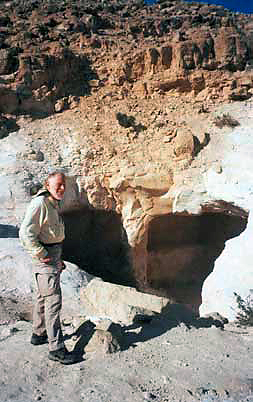A welcome introduction of Greywater to the Built Environment
 Most of the attention to household water use in developed countries goes either to blackwater, water after its use in toilets1, or to greenwater, water used for gardens and other greenery2. However, between those two uses is greywater, water that is used by the laundry, general cleaning, and perhaps dish washing (provided appropriate filters are installed). Although it makes up a large proportion of household water, greywater has been neglected by both policy makers and analysts. What a pity when it can replace the 30% of water that is typically used to flush toilets and an even larger share of the water used outside the house (image1 right).
Most of the attention to household water use in developed countries goes either to blackwater, water after its use in toilets1, or to greenwater, water used for gardens and other greenery2. However, between those two uses is greywater, water that is used by the laundry, general cleaning, and perhaps dish washing (provided appropriate filters are installed). Although it makes up a large proportion of household water, greywater has been neglected by both policy makers and analysts. What a pity when it can replace the 30% of water that is typically used to flush toilets and an even larger share of the water used outside the house (image1 right).

This special issue of Built Environment Journal (vol. 42; no. 2) goes far toward filling that gap. It contains seven articles, all of which focus on grey water use in urban housing. To the credit of the three co-editors—Eran Feitelson, Jonathan Chenoweth, and Ằngeles Pereira—the articles focus less on the range of efficient and effective techniques for making best use of grey water in favour of more attention to the institutional changes necessary for governments to permit its use, and, perhaps even more important, educational efforts essential for the public to accept its use (image 2 left).
More attention to greywater would help reduce both water withdrawals from ecosystems and water releases back to them. Moreover, the principles, if not specific measures for greywater use are just as applicable to the institutional and commercial sectors, as to the household sector (image 3 below). We have a long way to go, and Feitelson, Chenoweth, and Pereira show how to get started.

Footnotes:
- For instance research from the US on its use in agriculture after recycling
- The sources and quality of water for plants is discussed for instance by the UK’s Royal Horticultural Society.
Blog Review of Built Environment Journal (vol. 42; no. 2), by David B. Brooks, Ottawa, Canada
Images:
Listing Image: Heat Recovery schematic system within a Greywater recycling unit (Source: WipeOut997 via Wikimedia, CC BY-SA 3.0)
Image 1: Pre-treated greywater (left bottle) and effluent of the CW which is reused for irrigation of crops (right bottle). (Source: Heike Hoffmann photographer SuSanA Secretariat author, via Wikimedia, CC BY-SA 2.0)
Image 2: Educationalist David B. Brooks near a Nabatean cistern in Israel (Source: author)
Image 3: Heat Recovery system incorporated within a Greywater recycling system. (Source: WipeOut997 via Wikimedia, CC BY-SA 3.0)
________________________________________________________________
As ever we welcome further Built Environment blogs & tweets on this theme!

